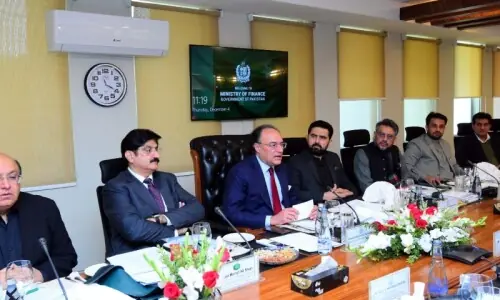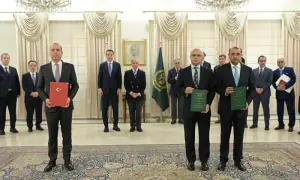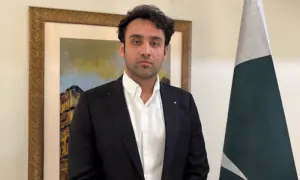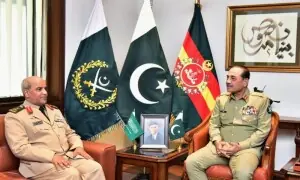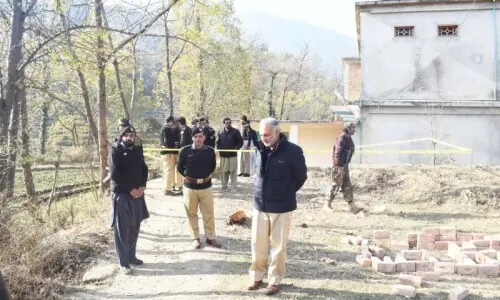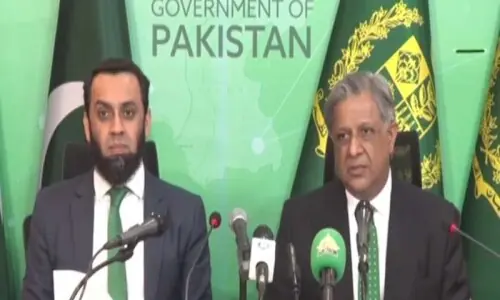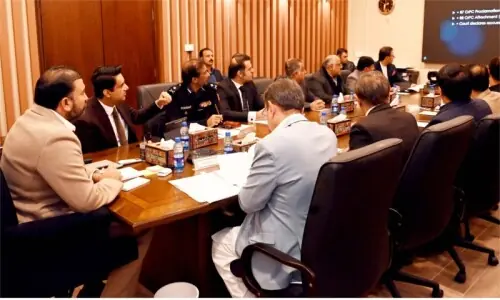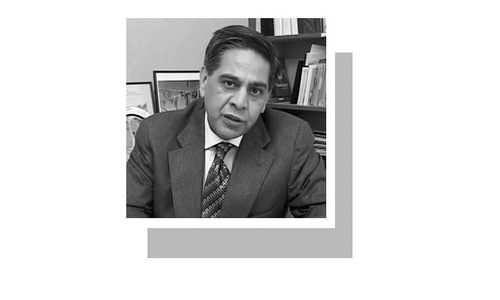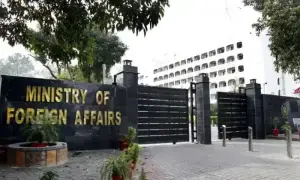
Pakistan has sold a total of 166 state-owned enterprises for Rs476.5 billion since 1990 to finance budget deficit, cut losses and improve efficiencies of the mismanaged entities through privatisation aimed at spurring economic growth and job creation.
While the government has refrained from studying post-privatisation outcomes of such a significant and far-reaching initiative so far, a general perception about the results of these sell outs has been disappointing in view of massive labour layoffs, continued injection of public money in many privatised entities and less than expected improvement in services.
It is in this background that Dr Akhtar Hasan Khan, a former federal secretary, has recently come up with his book, “The impact of privatisation in Pakistan” with critical observations over some of the key sale deals. He noted that there were substantial privatisation in 1990s and more widespread sales in the first decade of the 21st century as many units which were not nationalised in 1970s like PTCL and KESC were sold.
He reached the conclusion that “privatisation in both decades did not have a favourable impact on the growth of GDP, investment and employment. There was substantial labour reduction in privatised units. The sale of many large units to foreigners has led to persistent pressure on the balance of payments.” He makes out a case against the sale of strategic assets and utilities and says that international as well as Pakistan’s experience showed the best form of privatisation was through the sale of shares to the general public.
The book has examined in detail the process leading to transfer of ownerships of large banks, PTCL and KESC to the privatised sector, raising serious questions over transparency, pittance for which these golden assets had been sold and the post-privatisation issues emerging against the public interest in the absence of a fair regulatory framework.
Quoting many examples, the author challenges the privatisation as a means to reduce fiscal deficit for which increase in tax-to-GDP ratio, reduction in non-development expenditure on defence and public administration were better options. In his view, privatisation if it ever does make a one-off contribution to government finances and that too at a sub-optimal solution in view of the fact debt servicing did not fall as rapidly as the dividends from privatised entities. In fact, the debt servicing has been increased all along this period.
The book established with facts and figures that almost all the commercial banks including MCB, UBL, HBL, ABL, Banker’s Equity and Habib Credit and Exchange, despite all their weakness, were sold for much lower than their true value and that too in some cases to foreigners and locals of questionable background in terms of professional qualifications, on political considerations.
The privatisation of the MCB has led to better results but it was undoubtedly sold at a very low price while the bidding process of the UBL was not transparent and sold at a very low price to foreigners. The second sale of Habib Credit and Exchange (now Alfalah) was done at cheaper rate than the earlier sale.
The HBL was sold under the IMF pressure and its sale process was non-transparent, favouring the buyers as Rs19 billion incentives were offered to the staff in the middle of the sale price. The author argues that even the goodwill of the HBL should have been valued at Rs20 billion and reserve price fixed at Rs80 billion but it was sold for Rs22.4 billion. Using the various benchmarks of the Union Bank that was sold by Shaukat Tarin to Standard Chartered for $487 million, Mr Khan argues that if handled properly, the HBL would have easily fetched $1.5- $2 billion.
Mr Khan has also argued that the HBL sale in 2004 was done in haste and the process completed in a week. He suspected that dummy parties were raised by the government to compete with Agha Khan Fund to “show that bidding process was competitive.” He argued that even the prequalification of the AKF was questionable to bid for a large bank like the HBL because the AKF was neither a public nor a private limited company, a non-corporate identity without a balance sheet.
The book has described the privatisation of KESC as ‘an unmitigated disaster’ and ‘the biggest blunder of privatisation in Pakistan’.
The government pumped Rs147 billion into the KESC between 2002 and 2010 (Rs109 billion before privatisation and Rs38 billion after privatisation till 2010).
The government has forced Wapda to supply 700mw to KESC although it has not been paid for abut Rs81 billion.
Mr Khan has questioned repeated changes in the shareholding structure of the new buyers and change of managements subsequently with questionable backgrounds against the binding agreements.
“The main reason for privatisation of the KESC was that it wanted to get rid of this classic loss-making enterprise. Unfortunately, the government is paying more after privatization.”
The new buyers admitted in writing to the privatisation about its contractual failure to install additional 1000mw generation within three years from privatisation besides three other major breaches of the sale deed. Also the agony which the people of Karachi have faced since privatisation due to more frequent outages and loadshedding exceeding 48 hours in some cases could not be described in words.
In fact, he argued that the KESC was one of the focal points in the intractable problem of circular debt, as it continues to purchase electricity from Pepco on credit and runs its plants on fuel procured from PSO on credit, forcing the government to take over KESC debts to clear up circular debt. “The economy of Karachi and consequently of Pakistan have been placed in a quandary by this ill-advised privatisation of a public utility, also a natural monopoly to a party which had no credentials to run the KESC.”
Talking about PTCL, the author said strategic utilities and monopolies like PTCL should not have been privatised at all in view of the fact that foreign managements could provide access to foreign intelligence on secret telephonic exchanges between Pakistan and foreign countries while such units could retard economic growth.
In the case of PTCL, the labour force had been reduced by a half from 64,000 to 32,000, adding to the pool of jobless workers. Also, the sale of 26 per cent equity with management control to private party was not practiced anywhere else in the world and hence the PTCL sale has not been very happy as the buyers have not paid full bid money even after five years of process completion.
He also quoted the armed forces as telling the government that they had witnessed increased Indian ingression in Pakistan’s telecommunication system in post-PTCL sale period. He said the operating profit of PTCL that stood at Rs43 billion in 2004 and Rs38 billion in 2005 fell to Rs4.5 billion in 2008. Similarly, the taxation given to the government fell from Rs15 billion in 2004 to Rs8 billion in 2007. The earning per share also slid from Rs5.83 in 2004 to a loss of Rs0.55 per share in 2008.
Likewise, the government dividend declined sharply after privatisation from Rs31 billion in 2005 to Rs6.3 billion in 2007 and the government did not receive any dividend in 2008 because the company ran into losses. On top of that, some provincial governments have complained against the PTCL for not providing telecommunication services in far-flung areas. “The most damaging condition that was made part of the agreement was a ban on issuing new licences that blocked the way for foreign investment in 3G licences and other departments”.
Also, the national telecommunication corporation was blocked from opening a new gateway exchange forcing all government institutions to make inland and international calls through PTCL. He also questioned a number of post-privatisation changes in the PTCL deal favouring new buyers at the expense of public and national interest.


